
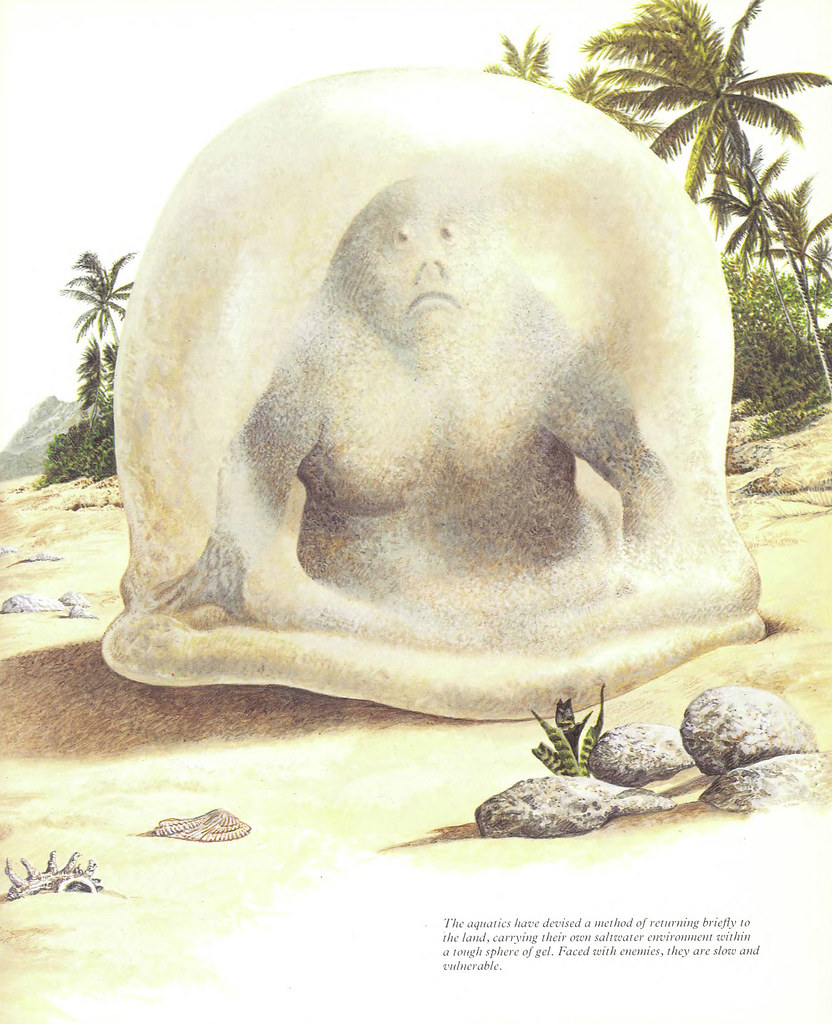
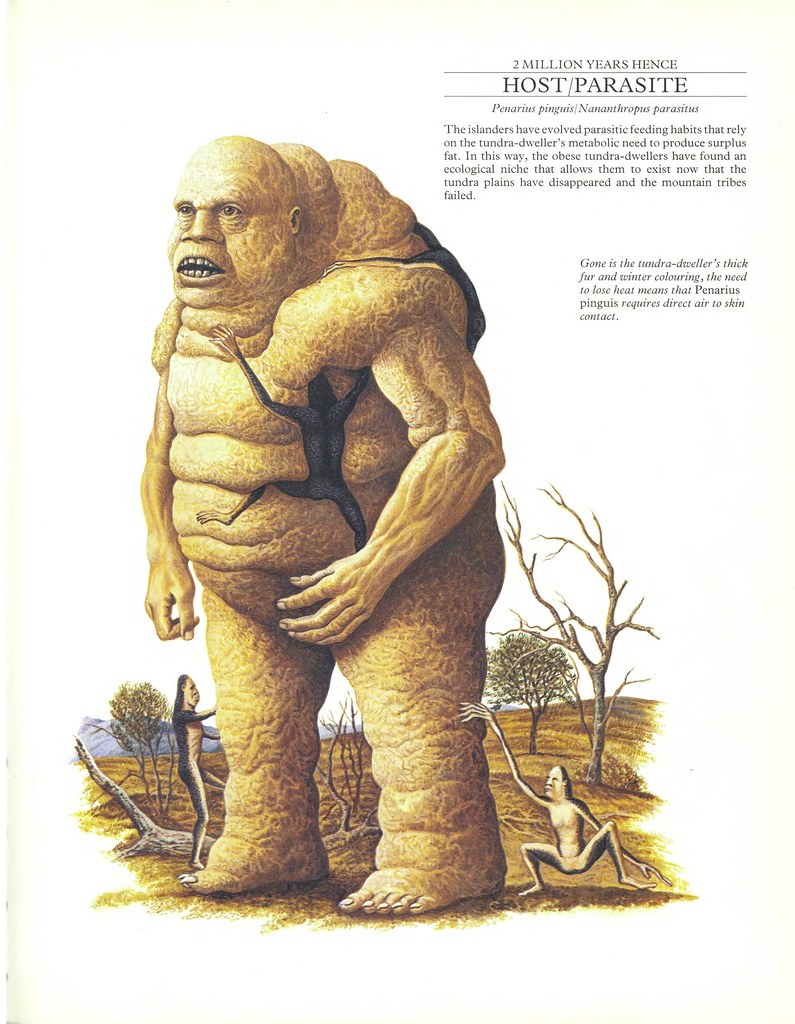
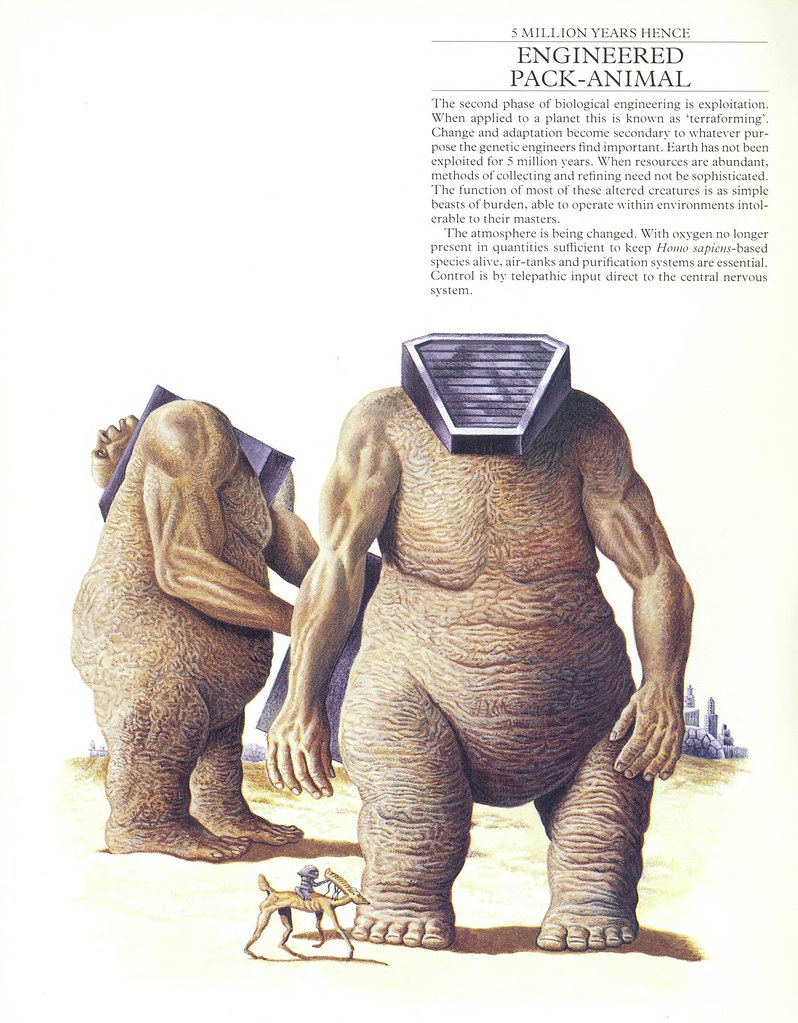

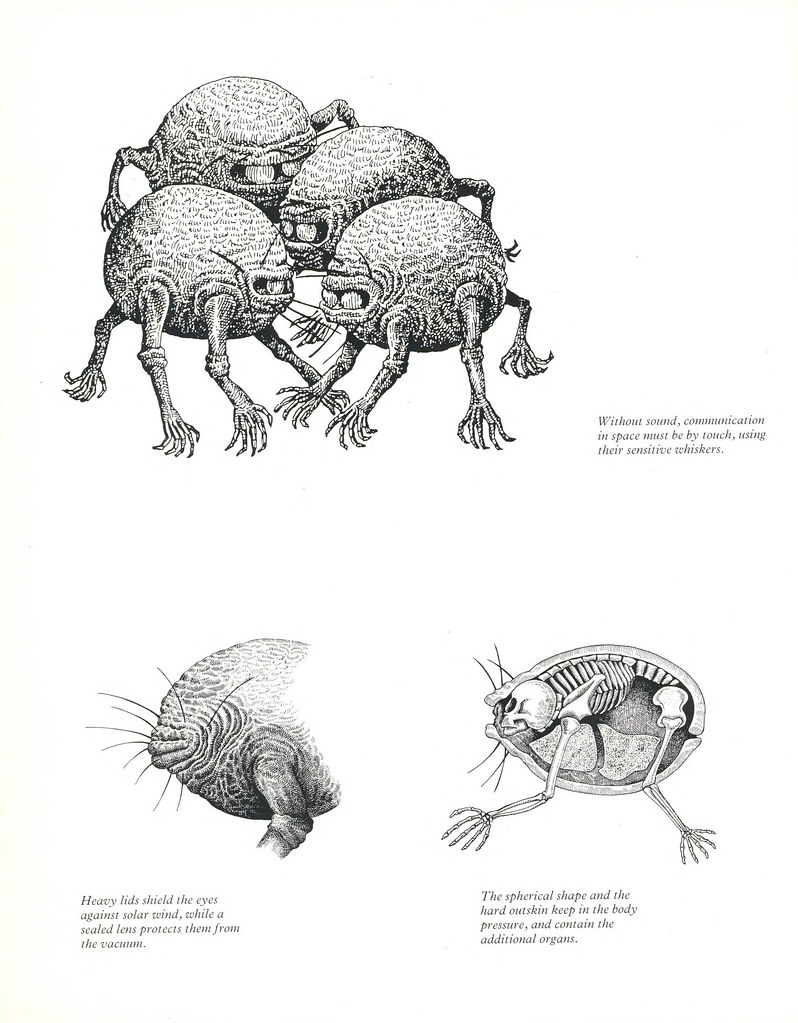
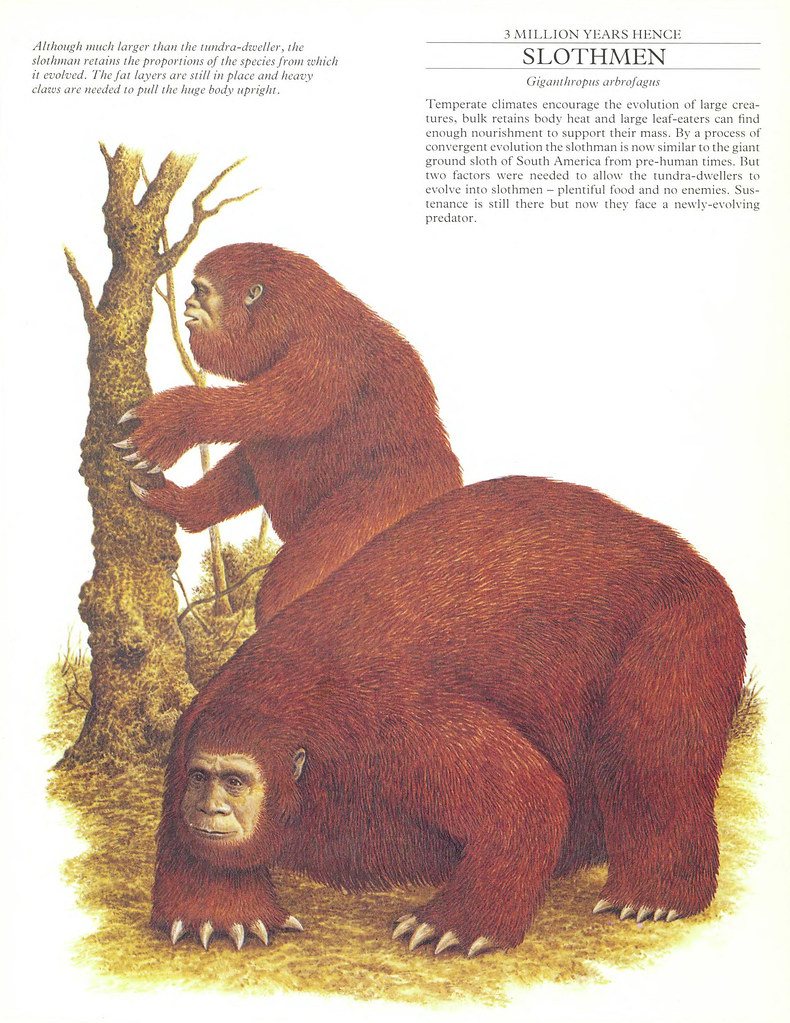
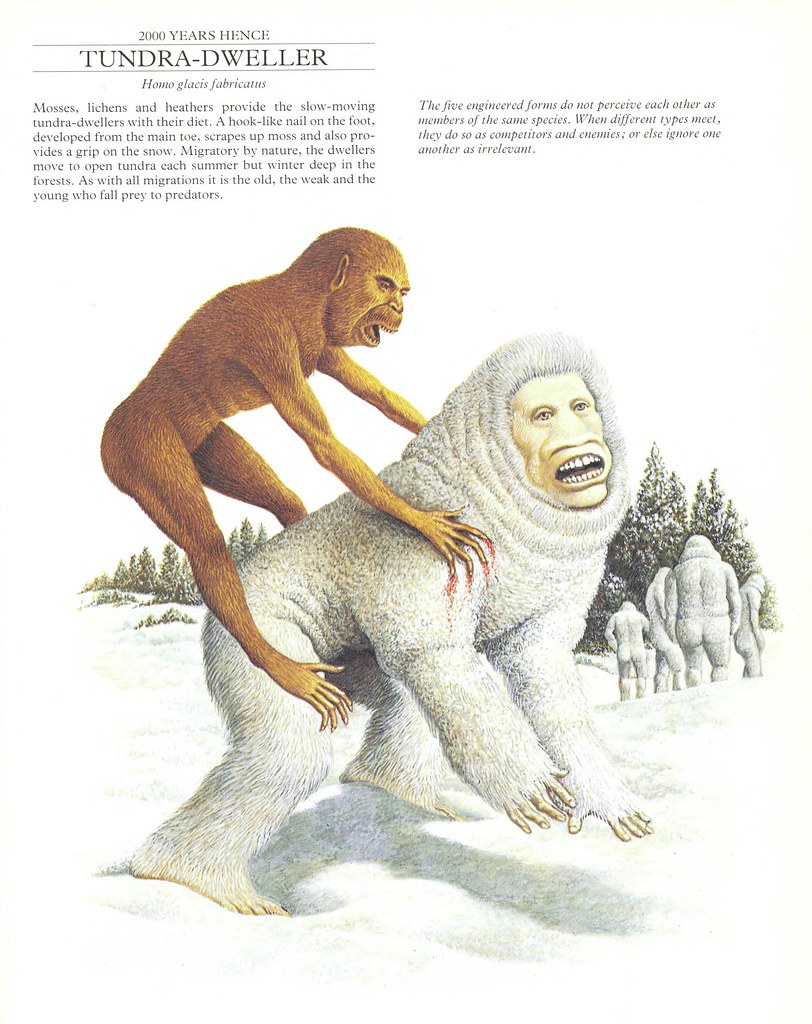


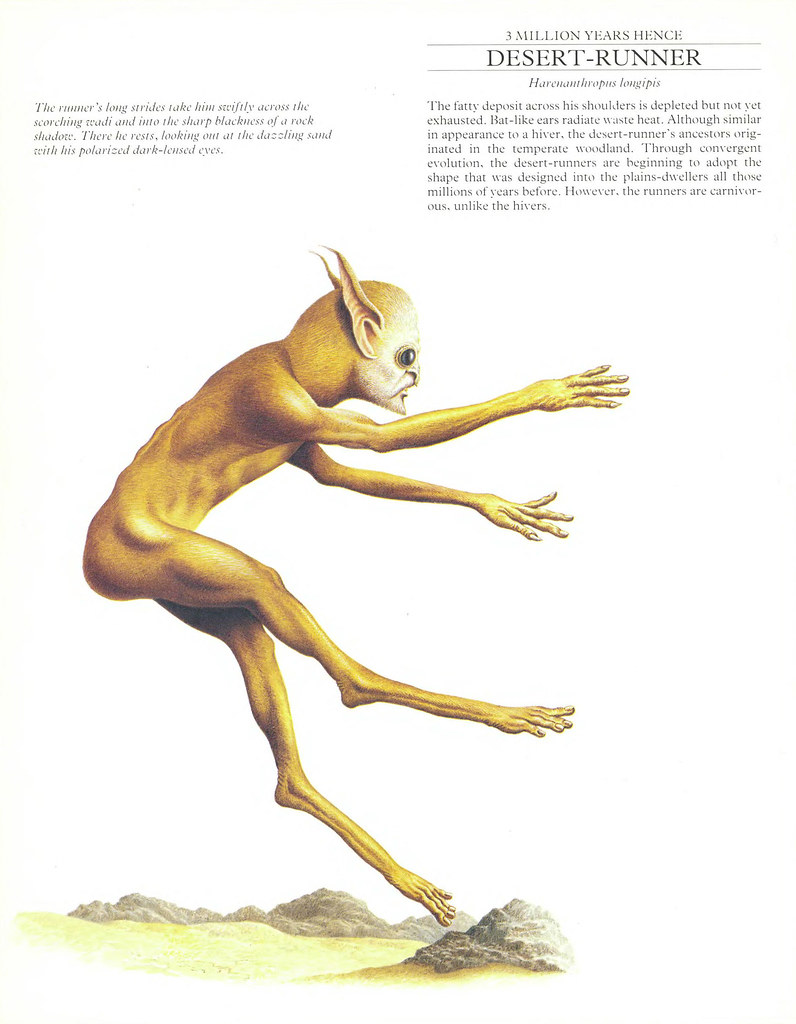
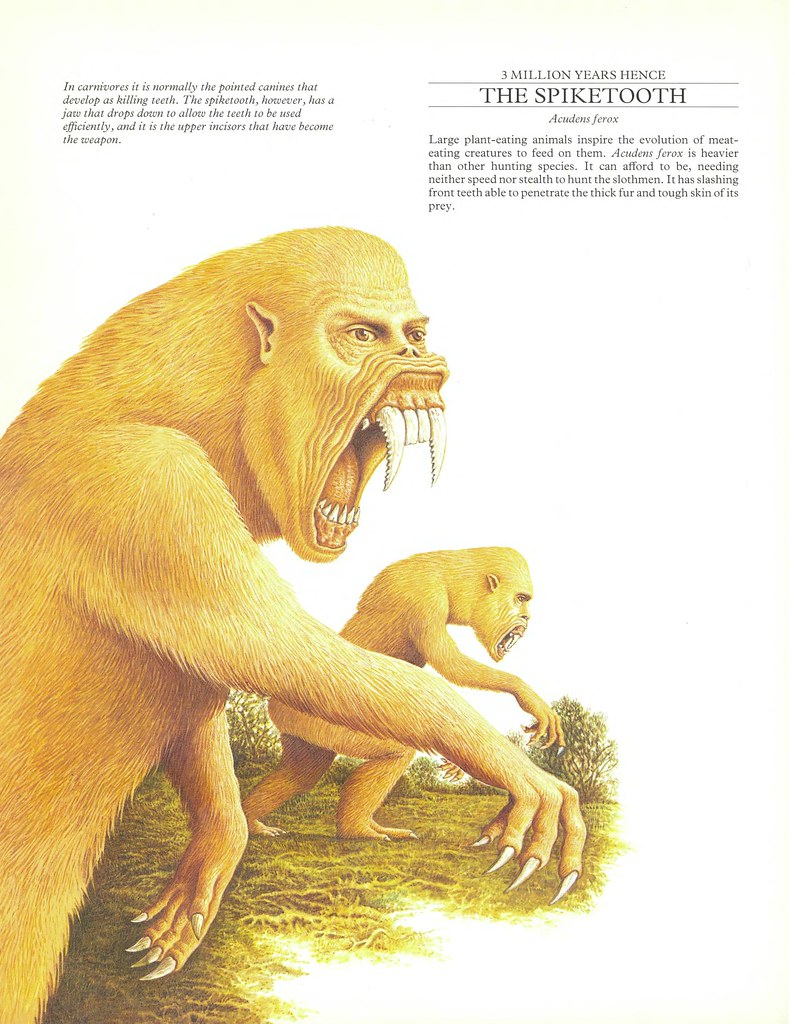

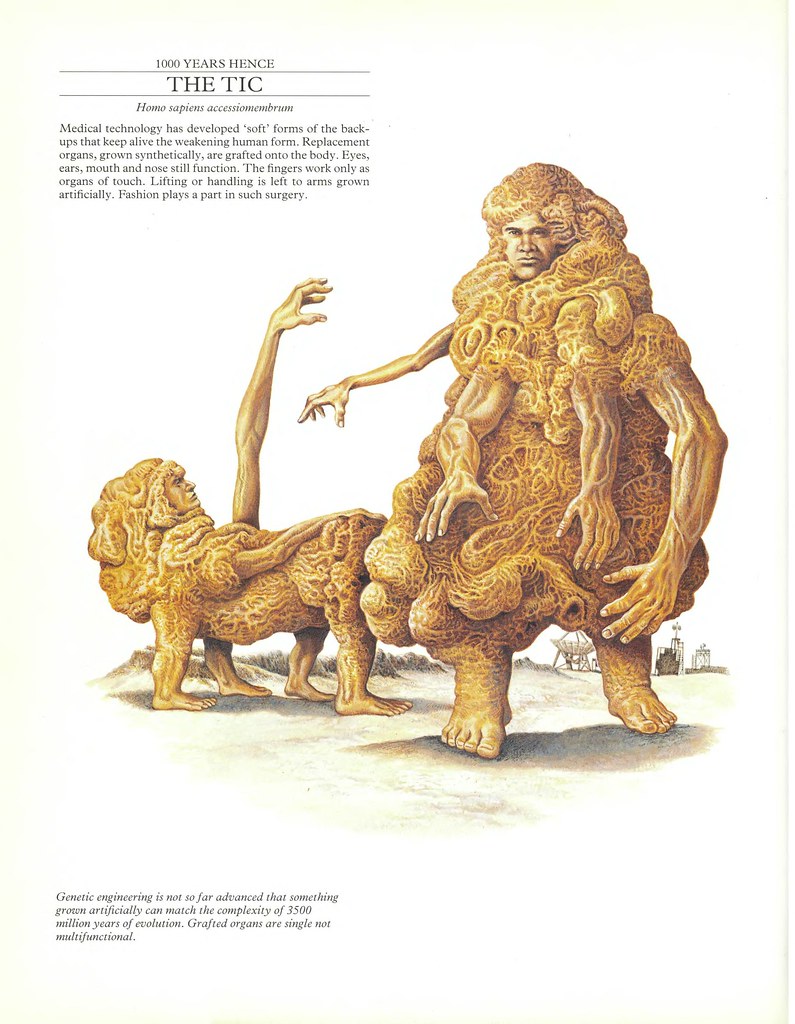
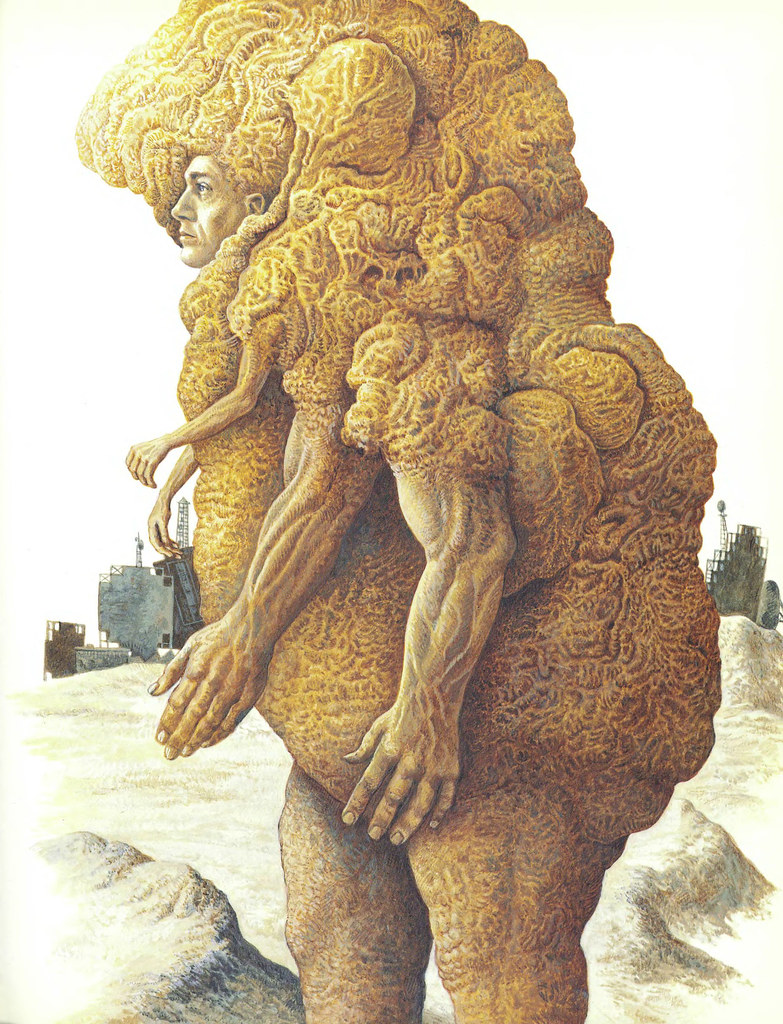

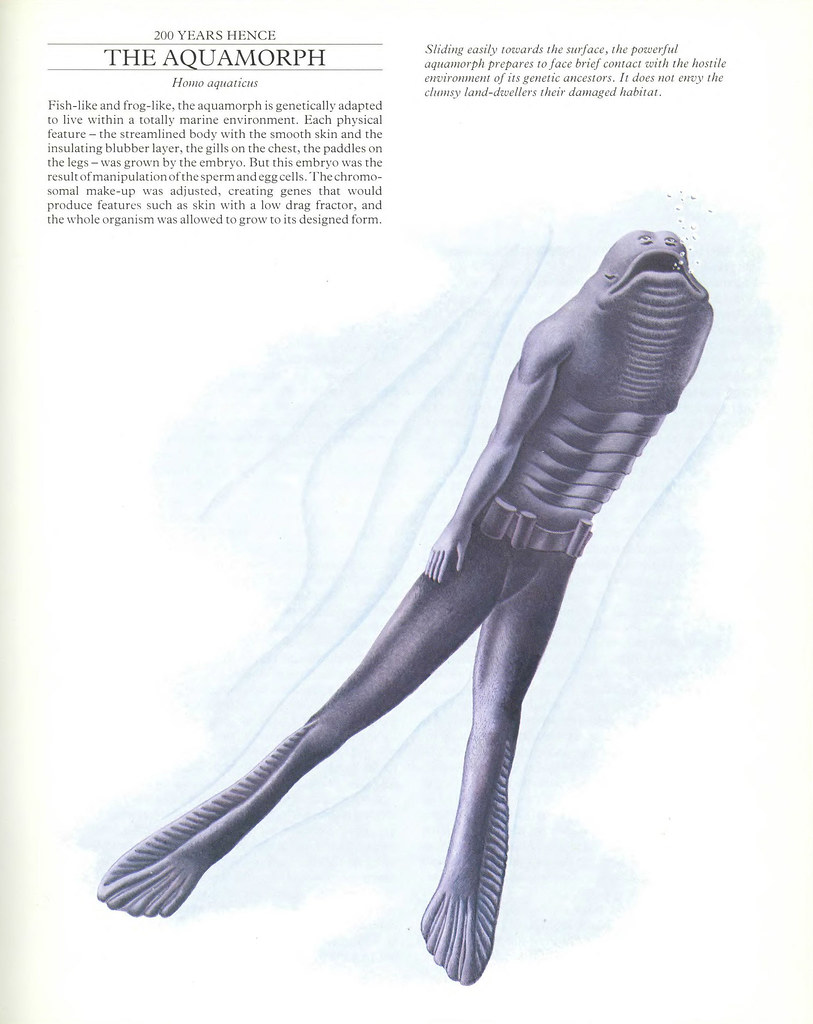

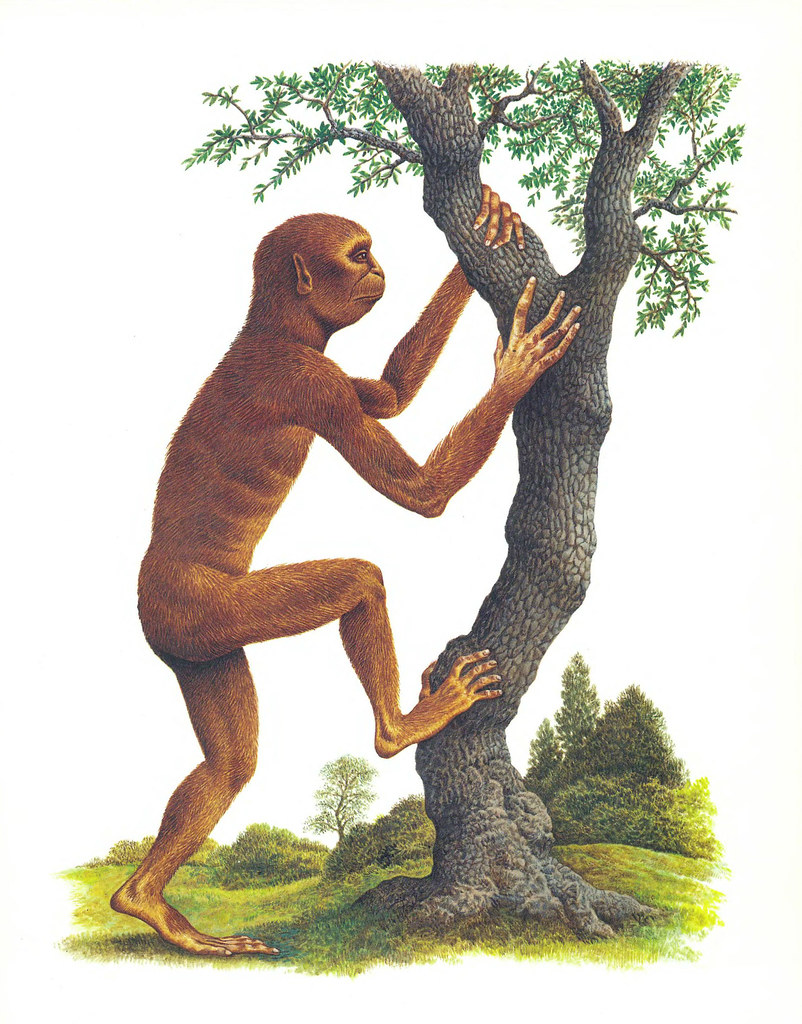
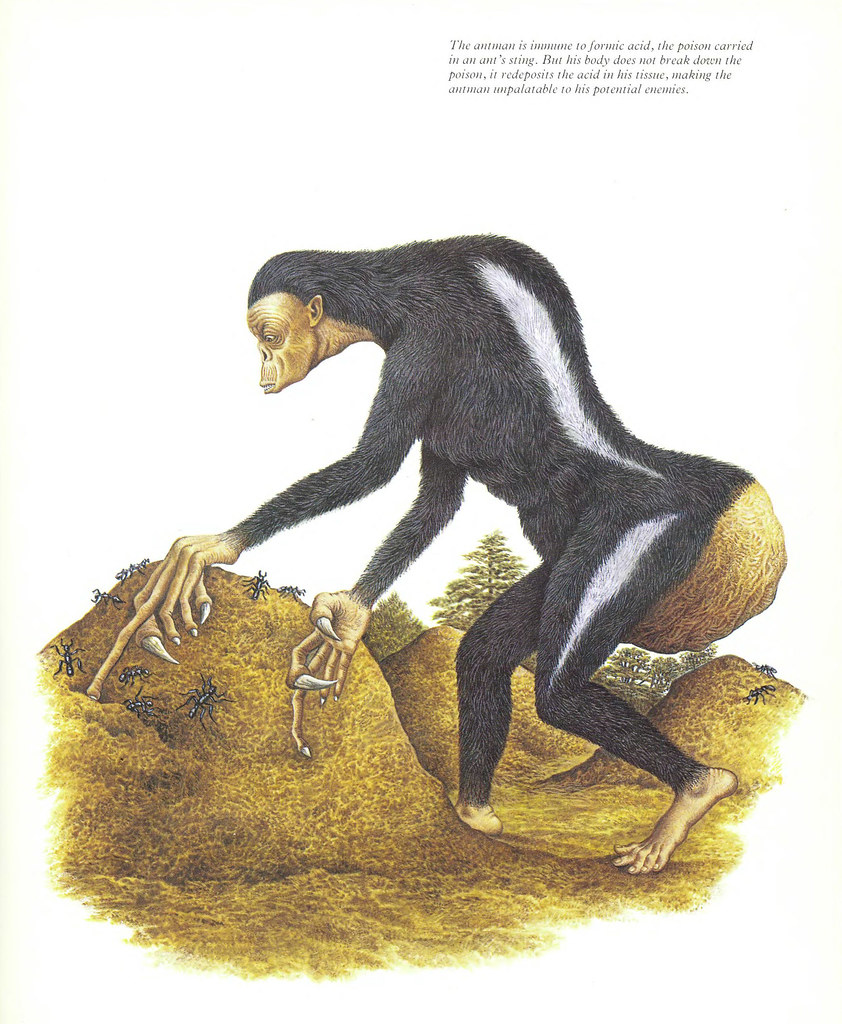
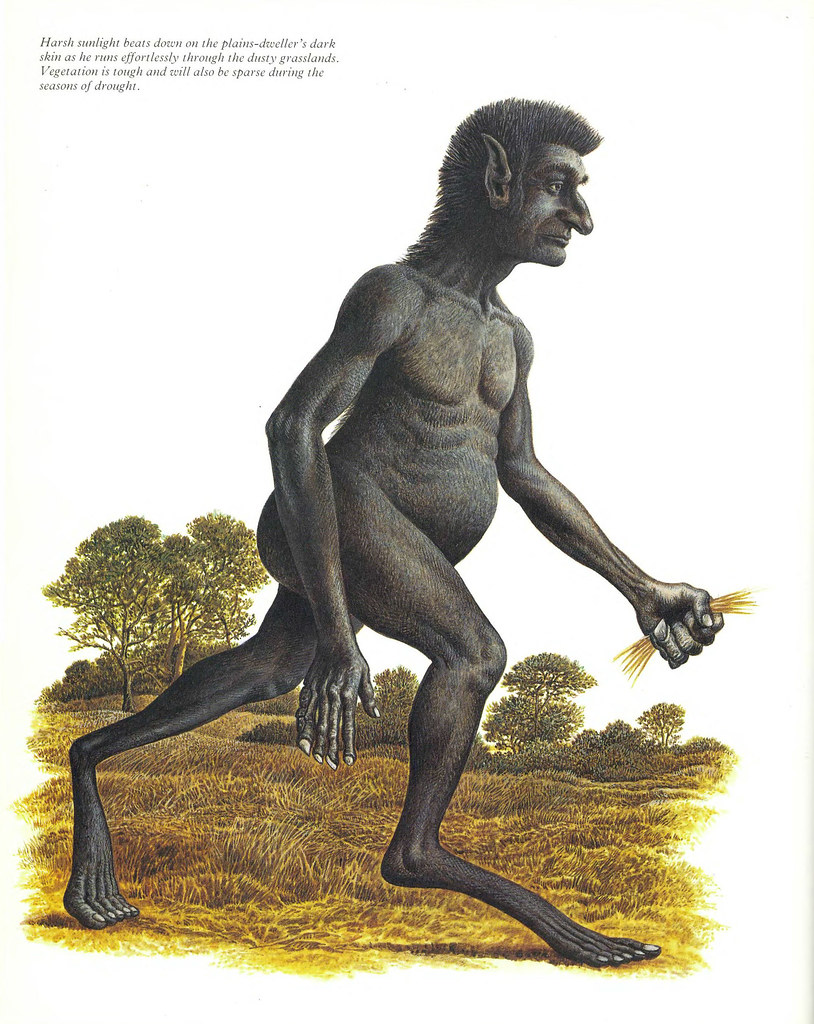
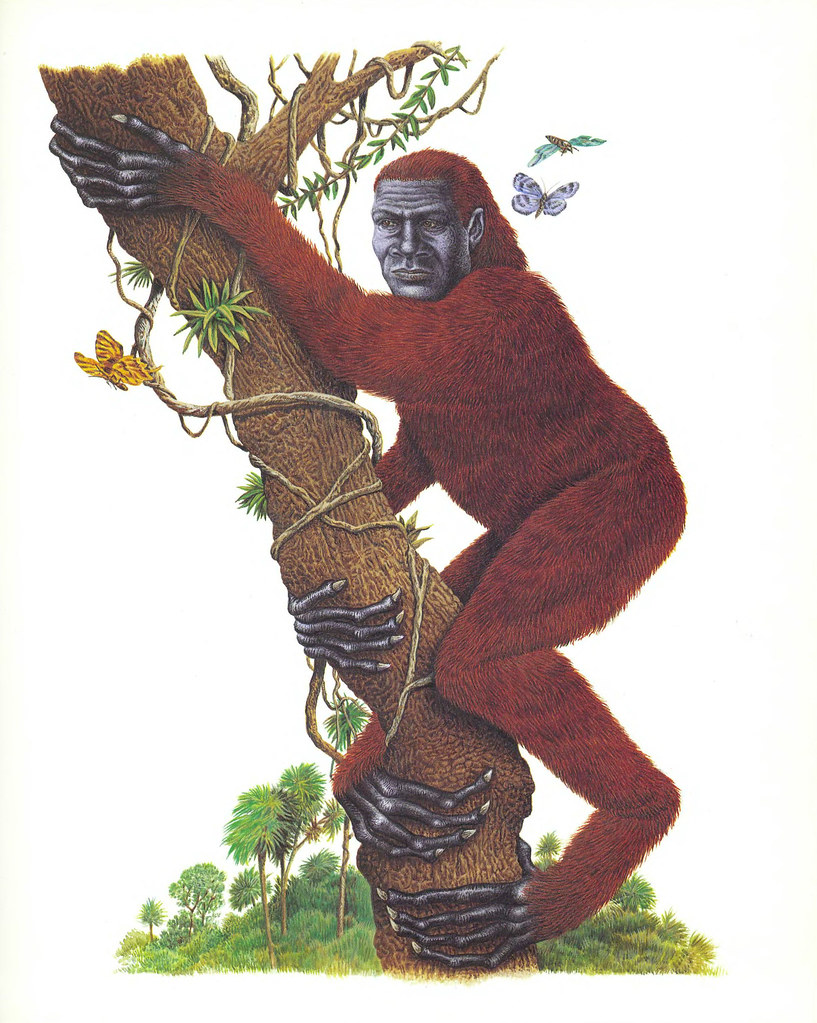
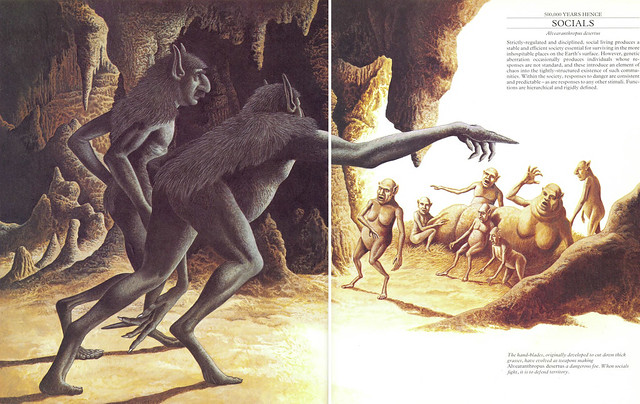

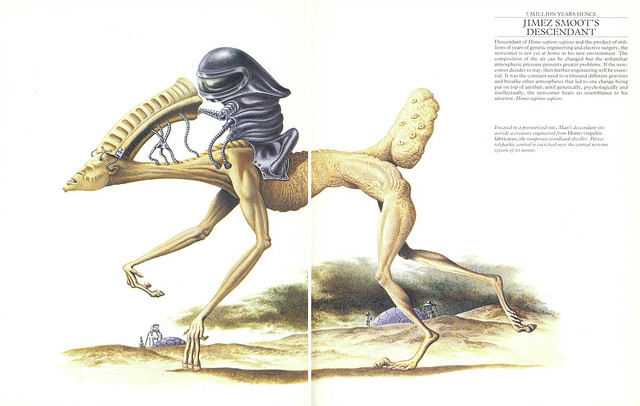
Flickr set here
"The book begins with the impact of genetic engineering. For 200 years modern humans morphed the genetics of other humans to create genetically-altered creatures. The aquamorphs and aquatics are marine humans with gills instead of lungs. One species - the vacuumorph - has been engineered for life in the vacuum of space. Its skin and eyes carry shields of skin to keep its body stable even without pressure. Civilization eventually collapses, with a few select humans escaping to colonize space. The humans that manufactured these species degrade to simple farmers and following a magnetic reversal, were driven to extinction. Other humans, the Hitek, become almost totally dependent on cybernetic technology. With Magnetic reversal imminent, the Hitek built genetically altered humans to occupy niches: Genetically-altered humans include a temperate woodland species, a prairie species, a jungle species, and a tundra-dwelling species.
Since then the genetically-altered humans must face a new phenomenon. They can no longer be genetically tweaked in a lab, so all modifications must naturally evolve. Many new forms resulted from natural selection. Socials, colonial humans with a single reproductive parent, Fishers, otter-like fishing humans, Slothman sloth-like humans, Spiketeeth, saber-toothed predatory humans, and even parasitic humans developed through natural changes.
After five million years of uninterrupted evolution, the descendants of modern man that retreated into space returned. Then the world changed dramatically. Earth was terraformed and covered in vast alien cities. The humans and other life forms in this new Earth must breathe air with low oxygen content. Thus the alien invaders use cyborg-technology to fuse the bodies of the few human species they find useful on the planet with air tanks and respiration systems. Genetic modification also returned and giant building humans and tiny connection humans were bred to aid city construction. Genetically created horse-like men serve as mounts for the invaders. Some engineered human species even became farmed like pigs or cattle. As with all civilization, this new era of man fell apart once again.
Eventually the spacefaring humans left, the Earth was left in ruins. With barely any oxygen left in the Earth's atmosphere, all terrestrial life on the planet perished. At the bottom of the world's oceans, at the oases that were the underwater hot springs, life continue. In the abyss, was Piscanthropus profundus, a deep-sea descendant of the now-extinct Aquatic evolved. It is implied that Piscathropus profundis would eventually recolonize Earth's surface." - quote source from Wikipedia article
The book can be read online here.
Learn more about the artist, Dougal Dixon, at his website. I'll be sharing more of his work in the near future.
And this is where I'd normally link to a purchase link for the book but it's been out of print for twenty years and used copies are not cheap.
No comments:
Post a Comment